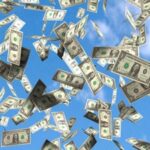During the period from 1991-2001, when the economy experienced unmitigated growth and relatively little political upheaval, analyses could finally be made of former President Reagan’s supply-side economic policy, known as “Reaganomics.” The Reagan administration implemented upper-bracket income tax cuts and cuts in capital gains taxes in an effort to increase the money supply and therefore increase aggregate demand and ultimately price levels. The shift in fiscal policy implemented by Reagan in response to economic stagflation was the first time policymakers had ever tried such policy: The Keynesian economist response would have been to use various tools in order to increase short run aggregate demand at the current price level and therefore increase economic output. Reagan met ultimately with both successes and failures in this venture. One of the main failures was his inability to significantly cut government spending as promised; indeed, under Reagan the defense budget was increased and not offset by other government spending cuts. This lead to a deepening government deficit that would take about a decade to offset. The inability to mitigate increases in government spending meant that Reaganomic policy de facto was a contradiction to the concept of supply-side economics, as increases in government spending increase aggregate demand rather than aggregate supply.
In addition to that, the cuts in tax revenues were meant to increase overall tax collections in other areas, an idea based on the Laffer curve: at a certain point, the marginal tax will discourage spending to the point where a tax cut will actually increase tax revenue. The tax cuts were also supposed to encourage output via investments, which would then lower the demand for money and lower price levels. The cuts, however, appeared to go beyond the maximum marginal rate to the side of the curve in which not enough taxes were collected based on the economy. The economists of the 1990s noted that, while the nominal tax collections did increase and surpass previous levels shortly after the tax cuts, the real tax revenue (adjusted for inflation) in fact did not rise until much later. Government spending likely had an effect on this, with high inflation rates lowering the multiplier and increasing crowding out effects. Reaganomics did succeed in lowering inflation rates, and this is likely because his strategy represents one of “speeding up” the timeline of long run price changes, which in fact are determined by an increase in output. However, in the short run, Reagan ran up a deficit and did not induce significant change as promised, leaving the budget problems to future government to sort out.
The Obama administration, inheriting budget deficits and an economic recession, chose the Keynesian approach to fiscal policy. Since World War II-era, this has been the policy at the forefront of government economic intervention. Only recently, because of Reaganomics, has such policy become an issue of intense political nature. Other issues aside, the Obama economic stimulus was found to have a multiplier of 2.5, representing a cautious marginal propensity of consumption (MPC); at the same time, lower price levels and inflation rates minimized the crowding out effects. The multiplier represents an increase in aggregate demand, a short run decrease in price levels, and a decrease in interest rates.
These changes are meant to effect the long run economy continue to grow and bounce back from recession more quickly by increasing consumption and investment. Over the long term, the deficit run up by these changes will presumably be offset by future economic growth and inflation. However, it is this very presumption that leads to question whether the short run cost of the stimulus is too high; for indeed the long term offset of future economic growth is the cost of such a short run venture. Reaganomics sped up long term effects at a large cost as well, but did achieve the lower inflation rates that Obama administrative decisions may not be able to control. Inflation at this time is not as serious as it was in the early 1980s and thus Obama is justified. Like Reagan, however, Obama has cut taxes, and is in fact taking the steps that Reagan did not take far enough in trimming down government spending. While not strictly coming from a supply-side or Keynesian standpoint, it appears Obama is using all of the tools possible that economists have historically proven. And learning from history is the best anyone can do.



